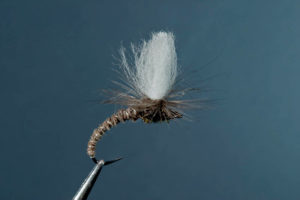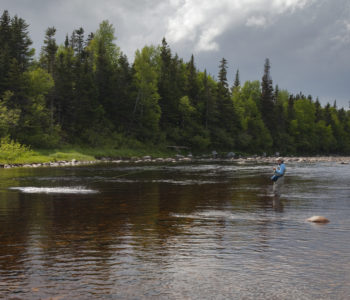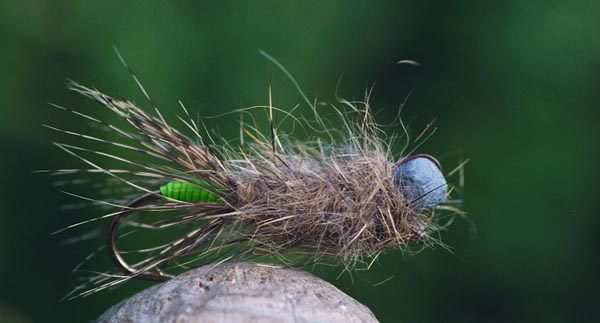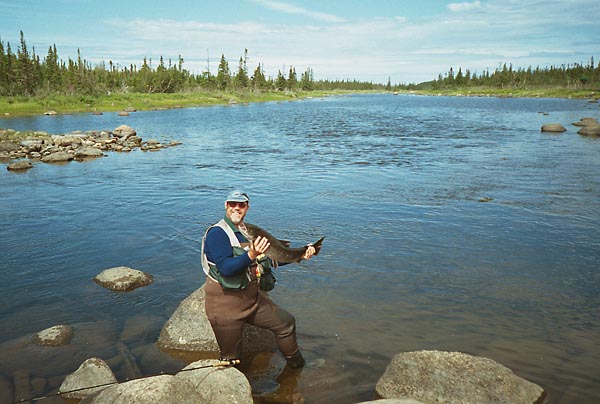
Lessons learned by experiences and observation
From earlier lessons and experiences, I have learned that as soon the air temperature got higher than the water temperature, that is when you can start using dry flies for salmon. It is even used as a rule of thumb by several of my close friends, but when air and water temperature gets too warm it doesn’t work anymore, of course. When in mid summer the water temperature gets too warm and the oxygen have dropped to critical level, most salmon hiding in deep lies with their nose down at the bottom and prevent any activity to save their strength for their upstream journey and spawning.
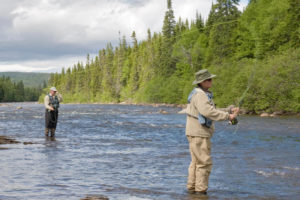
I don’t like rules for salmon fishing, and I always have to keep in mind what Lee Wullf once told me: “The only definite thing that you can say about salmon, is that you can not say anything definite about them” and I really believe this rather strongly.
Another striking lesson that I learned well in Atlantic Canada was that fishing rising water was not so good across the Atlantic, but from the time it has peaked and started to drop, it is prime time for many rivers. (In Norway however, the best wet fly fishing for salmon I experienced was exactly the opposite, and caught most fish during rising water) In both places I found dry fly fishing the best at normal and low water levels.
To fish a dry fly, you do not have to see fish move to be successful, and if you are in a pool that you know holds fish, you can cover the water in a general way just as effectively as with any wet fly. I often fish a good looking pool with the picture of an empty chess board (or blank spreadsheet) in my mind, which I place over the pool. I only number the rows, and use the columns for when I start moving in the water. The nearest row I give number one, and I make the rows as long as the fish can have their lies. I don’t walk through the pool right away, but just fish it from the most upstream position first, and try to cover as many rows and squares as I can by casting slightly upstream and working my way downstream through my invisible grid. Every time I fish for salmon, I see lots of people getting in the water as far and deep as possible, and take their position exactly at the place were the salmon have their lies. The next mistake they make is casting too far out, and letting their flies cover water that actually holds no fish at all. Therefore in small rivers, I even try to not get in the water at all when I begin with this useful and very powerful trick. When I have a pool all to myself, I always will start as much upstream as I can, and try to cover as many rows and squares as possible. Each square I imagine about eight steps wide and long. This makes the fishing both much more effective and well organized. If I have finished all the rows within my casting range, I make eight steps downstream. I do exactly the same process, starting from my second column and by starting, covering row number one first. This is how I work myself through the entire pool, with casts sometimes not much longer then 10-12 ft.
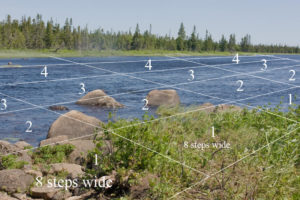
I am a big fan of long drifts, but I also discovered that in some waters, too many long drifts scare the fish and keep them down, so in those rivers, the above method is a powerful trick that works extremely well.
By other experiences and observations in my dry fly fishing, I discovered that there isn’t so much difference in fishing large or small rivers, as long you know the places that hold fish. However, a smaller river has my preference, and personally I love fishing rivers that are about 40-50 ft wide, because you can cover all the water from just one bank.
In spite of this preference, I have had some great experiences with fly fishing in estuaries, sea pools and brackish water in Norway, I hardly have had any in Atlantic Canada, and my recent experiences have led me to believe that it matters not how far you are away from the sea when using a dry fly in the rivers in Newfoundland.
I really don’t like coloured water for dry fly fishing, and I absolutely don’t mean the brown tannic acid colour that you see in many rivers in Atlantic Canada. It was a huge link to my successes in Norway, because most rivers in which I succeed all had concentrations of tannic acid. Unfortunately, I never performed any serious testing with regard to the correct concentration of tannic acid, which I really regret nowadays.
On both sides of the Atlantic, I discover that when rivers are getting low, and fish stay longer in the pools, they come up for much smaller flies. I strongly believe that the longer salmon stay in one pool, the better or stronger their old feeding memory returns. I remember very well how I did my fly fishing in three huge pools directly below a big waterfall in the Nordelva river in Norway. At the time, this place did not have any road access at all. It is one of the few rivers that I know of, where salmon first start to run upstream when the river is extremely low, because the only way for them to get up this waterfall was at very low water. The pools are deep and hold hundreds of fish, but I only succeeded when fish start head and tailing, and while using small flies presented with an absolutely drag free drift. The fish only porpoise for about 20 minutes, and only once every four hours or so, but each time I caught fish, and that has been going on like that for many years. I have had exactly the same experiences in several of Newfoundland’s rivers too. The most extreme example of any small fly success is my catch of four grilse in the same day on a # 16 dry fly in the Salmon River, and all fish were head and tailers.
